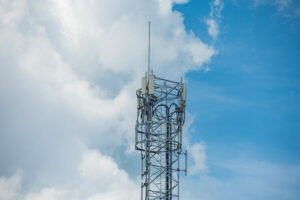Telcos, 2 agencies to build central data system for cyber, physical infra
THE PHILIPPINE Chamber of Telecommunications Operators (PCTO) and its partner agencies in the government plan to establish a central data repository for the country’s cyber and physical infrastructure. The PCTO, Cybercrime Investigation and Coordinating Center, and PNP Anti-Cybercrime Group have formed a multisectoral group, PROTECTA Pilipinas, aimed at protecting the Philippines’ technology assets. One goal […]

THE PHILIPPINE Chamber of Telecommunications Operators (PCTO) and its partner agencies in the government plan to establish a central data repository for the country’s cyber and physical infrastructure.
The PCTO, Cybercrime Investigation and Coordinating Center, and PNP Anti-Cybercrime Group have formed a multisectoral group, PROTECTA Pilipinas, aimed at protecting the Philippines’ technology assets.
One goal of the group is to build a central data system for the country’s cyber and physical infrastructure, Smart Communications, Inc. Head of Regulatory Affairs and PCTO Vice-President Roy D. Ibay told reporters on Thursday.
The Philippines does not have an initial assessment of its actual losses in terms of cable theft, he noted.
He said cable or copper theft has been identified as a major issue affecting utilities, telecommunications, and transportation industries.
For instance, South Africa is reportedly the most affected, with estimated losses ranging between $280 million and $370 million per year, he said.
“(For the Philippines), we have not estimated that yet, and that is why that is one objective of PROTECTA Pilipinas to come up with initially a repository of all this data. Because we do not have a central organization that makes a database of all this cyber and physical infrastructure,” Mr. Ibay said.
He said the group is also putting forward a concrete measure addressing cyber threats.
“It highlights the need for ongoing efforts to enhance our cybersecurity measures because cyberattacks can disrupt services like sensitive data and cause significant economic losses. Outside cybercrime, or cybersecurity issues, the threat to physical infrastructure,” Mr. Ibay said.
He noted that telecommunications infrastructure is a critical driver of economic growth.
“The digital economy in the Philippines is projected to [grow] by 2025. To realize this potential, we must ensure that our infrastructure is robust, secure, and accessible,” he said.
According to an earlier report issued by Google, Temasek Holdings, and Bain & Company, the country’s digital economy is projected to reach as high as $150 billion by 2030 as the e-commerce boom continues.
It projected that the Philippines’ internet economy will grow by an annual 20% to reach $35 billion by 2025.
The group, PROTECTA Pilipinas, will mainly work on safeguarding technology and digital infrastructures by helping develop and craft policies to address the issues hounding the sector.
“We really intend to gather the broadest consensus of thought leaders to be able to at least come up with certain policies that we can lobby to our lawmakers,” he added.
PROTECTA Pilipinas, composed of relevant government and private sectors, will facilitate collaboration between telecommunications operators, equipment manufacturers, and service providers to help ensure a secure infrastructure, Mr. Ibay said. — Ashley Erika O. Jose












